Bloodhounds, renowned for their incredible sense of smell and tracking ability, are large and active dogs that require a well-balanced diet to maintain their health and energy. This comprehensive guide is tailored to help Bloodhound owners understand the best nutritional practices for their pets, ensuring a balanced and healthy diet.
Understanding the Nutritional Needs of Bloodhounds
Bloodhounds are large, muscular dogs that require a diet rich in quality proteins and fats to support their active lifestyle and physical demands. Their diet should include high-quality proteins, essential fats, easily digestible carbohydrates, and vitamins and minerals. Proper nutrition is crucial for maintaining their overall health and high energy levels.
Our 5 Top Foods for Bloodhounds
The diets were selected by our founder Justin Palmer, a certified canine nutrition expert, specifically with Bloodhounds in mind:
High-Quality Protein: Essential for Bloodhound Muscle Health
Protein is vital in maintaining the lean muscle mass of Bloodhounds. Look for dog food that lists real meat, such as chicken, beef, or fish, as the primary ingredient. Adequate protein intake supports their physical activity and is essential for muscle repair and growth.
Essential Fats: Vital for Energy and Coat Health
Fats, particularly Omega-3 and Omega-6 fatty acids, play a significant role in a Bloodhound’s diet. They provide the necessary energy for their active lifestyle and help maintain a healthy coat and skin. Good sources of healthy fats include fish oil, flaxseed, and chicken fat.
Carbohydrates for Sustained Energy: Selecting the Right Types for Bloodhounds
Carbohydrates are essential for providing energy to Bloodhounds. Opt for complex carbohydrates like sweet potatoes, brown rice, and oats, which offer long-lasting energy and help maintain a healthy digestive system. Avoid excessive simple carbohydrates to prevent weight gain.
Vitamins and Minerals: Supporting Overall Bloodhound Health
A range of vitamins and minerals is essential for the overall health of Bloodhounds. Foods fortified with essential vitamins like A, D, E, and B-complex and minerals like calcium and phosphorus support immune health, bone strength, and various bodily functions.
Portion Control: Managing Weight in Bloodhounds
Due to their size and propensity for weight gain, controlling portion sizes is crucial for Bloodhounds. Feeding them two to three balanced meals a day helps manage their weight. Regular exercise and a controlled diet are essential for maintaining their ideal weight.
Special Dietary Considerations for Bloodhound Puppies
Bloodhound puppies have different nutritional needs than adult dogs. Puppy formulas rich in protein and fat, balanced for growth, are essential. Feeding them small, frequent meals supports their rapid growth and high energy levels.
Wet Food vs. Dry Food: What’s Best for Bloodhounds?
Choosing between wet and dry food depends on your Bloodhound’s preference and specific health needs. Dry food can help with dental health, while wet food can be more hydrating and often palatable. Some owners choose a mix of both to provide varied nutritional benefits.
Healthy Treats for Bloodhounds: Making Smart Choices
Treats are an important part of training and bonding, but choosing healthy options for Bloodhounds is essential. Low-calorie treats and snacks like carrots or apple slices are good choices. Treats should only make up a small portion of their daily calorie intake.
Transitioning Your Bloodhound to a New Diet
When changing your Bloodhound’s diet, it’s essential to do so gradually over a week to avoid digestive upset. Start by mixing a small amount of the new food with their current food, gradually increasing the new and decreasing the old.
Understanding Dog Food Labels: Choosing the Right Food for Your Bloodhound
Selecting the right commercial dog food is essential. Look for products with high-quality ingredients, real meat as the first ingredient, and without unnecessary fillers. The food should meet AAFCO nutritional standards for dogs.
Homemade Diets: Are They Suitable for Bloodhounds?
While homemade diets can offer fresh, whole-food nutrition, they require careful planning to ensure they are balanced and meet all nutritional needs. Consult a veterinarian or a canine nutritionist before opting for a homemade diet for your Bloodhound.
Hydration: Ensuring Your Bloodhound Stays Well-Hydrated
Proper hydration is crucial for Bloodhounds. Ensure your dog has constant access to clean water, as dehydration can lead to serious health issues, especially in large breeds like Bloodhounds.
Feeding your Bloodhound a balanced, nutritious diet tailored to their needs is essential for their health and happiness. Regular vet check-ups, careful monitoring of their weight and health, and adjustments to their diet as needed will help ensure your Bloodhound leads a healthy, active life. Remember, every Bloodhound is unique, and what works for one may not work for another. Therefore, it’s essential to consider your individual dog’s needs when planning their diet.
What Health Issues Are Bloodhounds Prone To, and How Can a Proper Diet Help?
Bloodhounds, known for their exceptional tracking abilities and distinctive appearance, are a breed that, while generally robust, are prone to specific health issues. A proper diet plays a critical role in managing these conditions. This article will explore the common health problems in Bloodhounds and how a well-balanced diet can mitigate these issues.
Managing Weight in Bloodhounds: A Balanced Diet Approach
Obesity is a common concern in Bloodhounds, leading to other health issues like diabetes and joint problems. A diet controlled in calories and rich in high-quality proteins can help maintain a healthy weight. Portion control and regular exercise are essential for weight management.
Joint Health: Nutritional Support for Bloodhounds
Due to their size, bloodhounds can be prone to joint issues like hip dysplasia. Diets enriched with omega-3 fatty acids, glucosamine, and chondroitin can support joint health. Maintaining a healthy weight reduces joint stress, decreasing the risk of common problems.
Skin and Coat Health: Importance of Nutrients
Bloodhounds are known for their loose, wrinkled skin, which requires nutrition. A diet rich in essential fatty acids, particularly omega-3 and omega-6, promotes healthy skin and a shiny coat. Limited-ingredient diets can help manage skin allergies.
Gastrointestinal Health: Ensuring Digestive Wellness
Bloodhounds may have sensitive digestive systems. A diet high in fiber and easily digestible proteins aids in maintaining good digestive health. Probiotics and prebiotics can promote healthy gut flora, reducing the risk of gastrointestinal issues.
Heart Health: Dietary Considerations
Heart issues, including dilated cardiomyopathy, can affect Bloodhounds. A heart-healthy diet low in sodium and rich in nutrients like taurine and omega-3 fatty acids is beneficial. Regular veterinary check-ups are crucial for early detection and management.
Eye Health: Supporting Vision with Nutrition
Bloodhounds can experience eye conditions like ectropion and entropion. Nutrients such as vitamins E and C, lutein, and beta-carotene, known to support eye health, should be included in their diet. Regular eye examinations are also necessary.
Preventing Bloat: Dietary Adjustments
Bloat, or gastric torsion, is a severe concern in Bloodhounds. Feeding smaller, more frequent meals and avoiding vigorous exercise around meal times can help reduce this risk. An easily digestible and fiber-rich diet can also promote good digestive health.
The Importance of a Balanced Diet for Bloodhound Health
A balanced diet for a Bloodhound should include the right balance of proteins, fats, carbohydrates, vitamins, and minerals. This balance supports their overall health and can mitigate the risks of breed-specific health issues.
Conclusion: The Role of Diet in a Bloodhound’s Health
Bloodhounds are prone to several health issues; a proper diet can significantly prevent or manage these problems. Tailoring your Bloodhound’s diet to their specific health needs can dramatically enhance their quality of life. Regular veterinary check-ups and carefully considering dietary choices can help ensure your Bloodhound remains healthy and happy.
Frequently Asked Questions About Feeding Bloodhounds
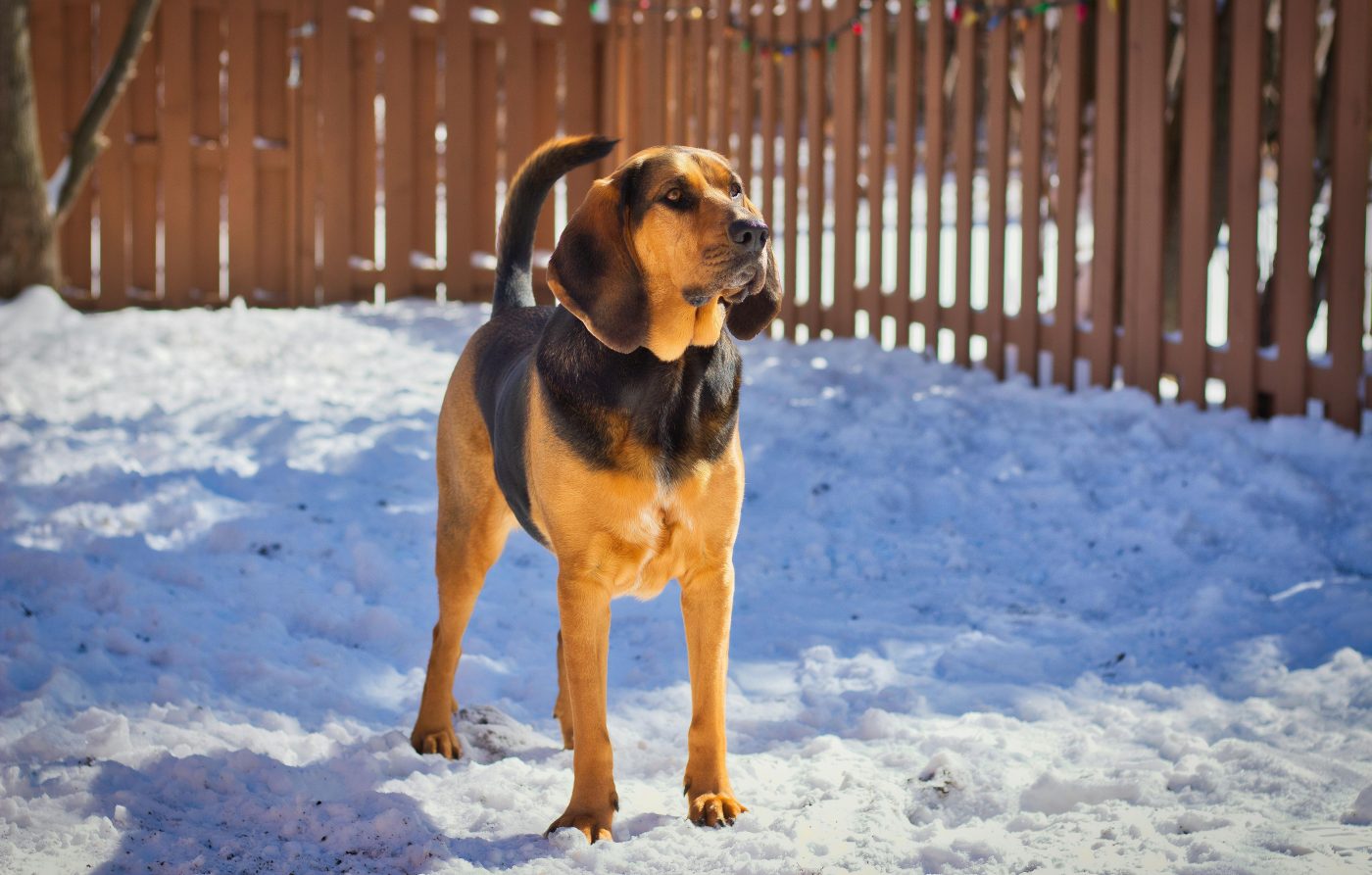
1. What is the best type of food for a Bloodhound?
The best food for a Bloodhound is high-quality dog food rich in proteins and fats and suitable for large, active breeds. Look for foods with real meat as the primary ingredient, and avoid fillers like corn or wheat. Matching the food to your Bloodhound’s age, activity level, and specific health needs is essential.
2. How much should I feed my Bloodhound?
The amount to feed a Bloodhound varies based on their age, size, and activity level. Generally, adult Bloodhounds need about 2.5 to 4 cups of dry food per day, split into two meals. Always follow the feeding guidelines on the food package and adjust as needed based on your dog’s health and activity level.
3. Can Bloodhounds eat a grain-free diet?
Bloodhounds can eat a grain-free diet, but it’s unnecessary unless they have specific allergies or sensitivities. Ensure that the grain-free diet is balanced and provides all the essential nutrients. Consult with your vet before making significant changes to your dog’s diet.
4. Are there any foods that are harmful to Bloodhounds?
Several foods harm Bloodhounds, including chocolate, grapes, raisins, onions, garlic, and xylitol. Avoiding these foods and being cautious about human foods you share with your pet is essential.
5. How often should I feed my Bloodhound?
Feeding your Bloodhound twice a day is generally recommended. This helps to manage hunger, maintain stable energy levels, and help prevent conditions like bloat.
6. Is it okay to give my Bloodhound human food?
While some human foods are safe for Bloodhounds in moderation, others can be harmful. Secure options include cooked lean meats, fruit, vegetables, and plain rice. Avoid toxic foods and consult your vet about secure human food options.
7. Should I give my Bloodhound supplements?
Supplements can benefit Bloodhounds, especially those with specific health concerns like joint issues or skin allergies. However, they should only be given under a veterinarian’s advice to ensure they are necessary and safe.
8. How can I tell if my Bloodhound is overweight?
An overweight Bloodhound may have a less visible waist and rib definition. You should be able to feel their ribs without a thick layer of fat. Consult your vet for a proper evaluation and diet plan if your Bloodhound is overweight.
9. What is the best way to transition my Bloodhound to a new food?
Transition your Bloodhound to new food gradually over 7-10 days. Start by mixing a small amount of the fresh food with their current food, gradually increasing the fresh food and decreasing the old. This helps prevent digestive upset.
10. Can Bloodhounds be vegetarians?
While dogs can survive on a vegetarian diet, it’s not ideal for Bloodhounds, as they thrive on a diet that includes high-quality animal proteins. If considering a vegetarian diet for health or ethical reasons, consult a vet to ensure all nutritional needs are met.
11. What are the signs of food allergies in Bloodhounds?
Signs of food allergies in Bloodhounds include itching, skin rashes, ear infections, and gastrointestinal problems like diarrhea and vomiting. If you suspect your Bloodhound has a food allergy, consult a veterinarian for proper diagnosis and management.
12. Is wet or dry food better for Bloodhounds?
Choosing between wet and dry food depends on your Bloodhound’s preferences and health needs. Dry food benefits dental health, while wet food can be more palatable and hydrating. Some owners opt for a mix of both to balance benefits.
13. How can I prevent my Bloodhound from eating too fast?
To prevent your Bloodhound from eating too fast, consider using a slow feeder bowl, dividing their meals into smaller portions, or feeding them using interactive food puzzles. Eating slowly is vital for digestion and can reduce the risk of bloat.
14. Can I feed my Bloodhound a raw diet?
A raw diet can be fed to a Bloodhound, but it requires careful planning to ensure it’s balanced and safe. Raw diets have risks like bacterial contamination and nutritional imbalances, so consult a vet before starting a raw diet.
15. How do I know if my Bloodhound’s diet is nutritionally balanced?
A nutritionally balanced diet for a Bloodhound should include the right proportions of protein, fat, carbohydrates, vitamins, and minerals. Look for dog foods that meet AAFCO guidelines and consult your veterinarian to ensure the diet meets your dog’s needs.
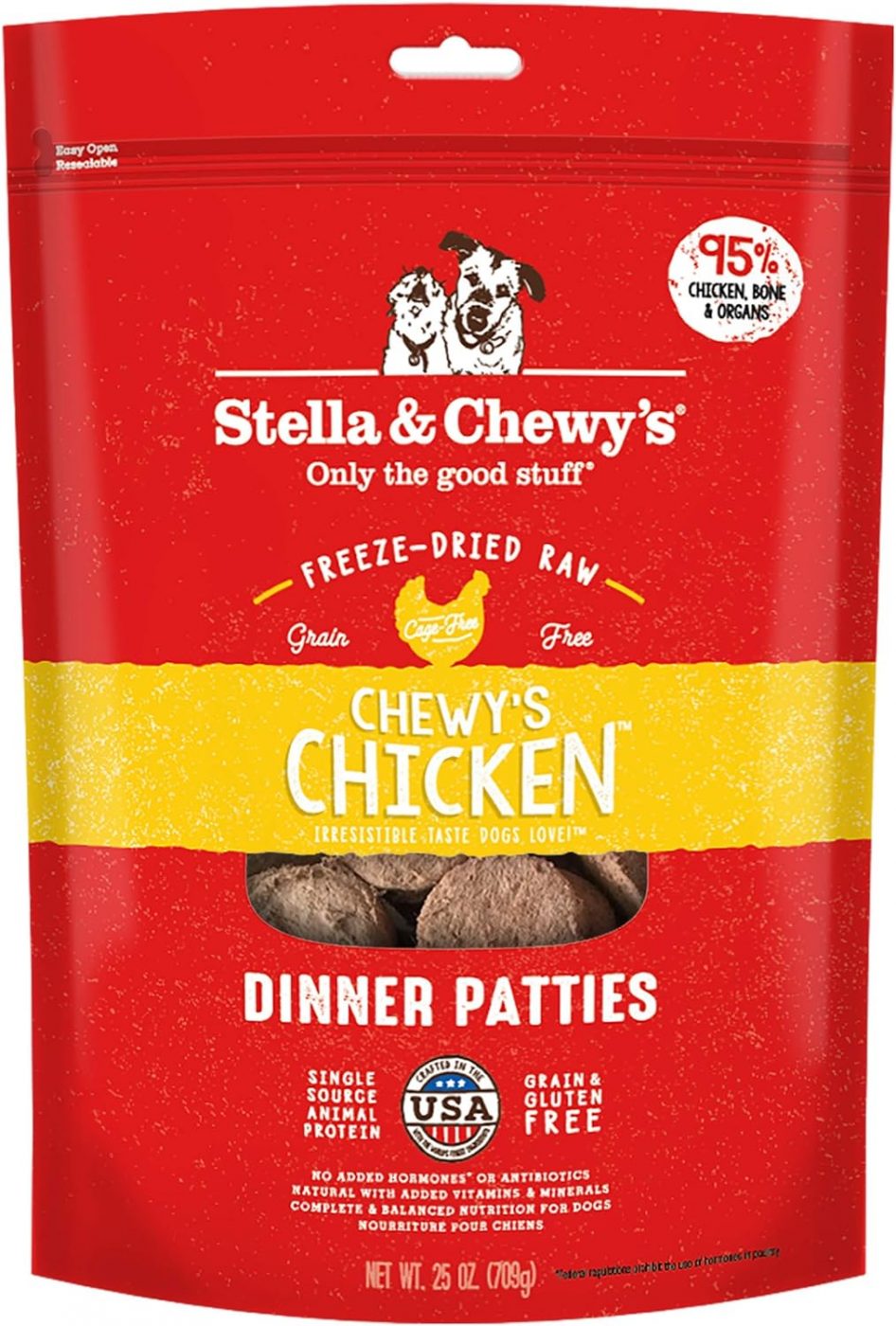
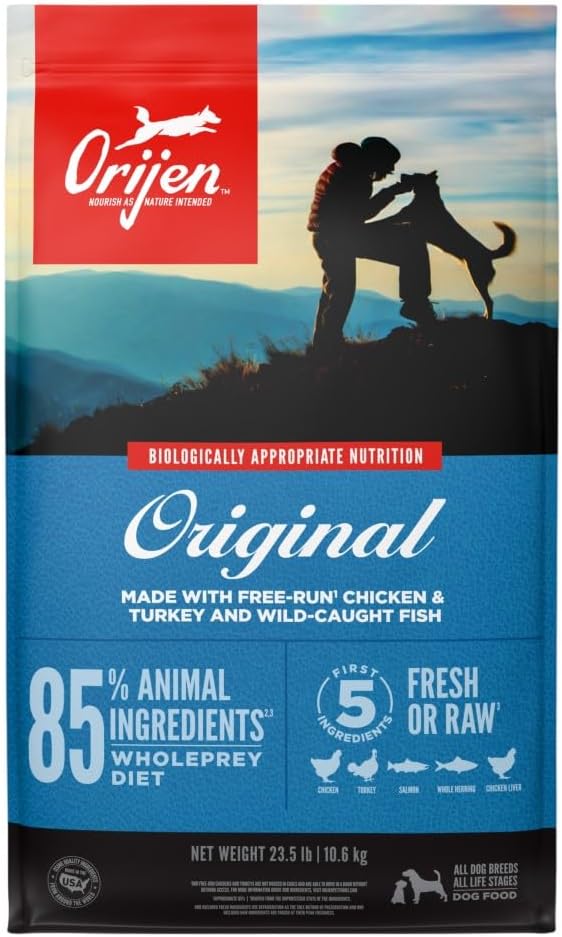
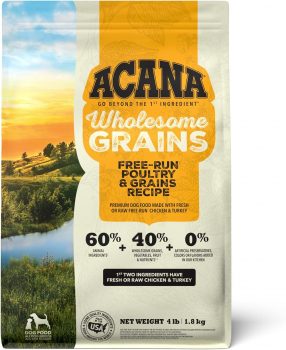
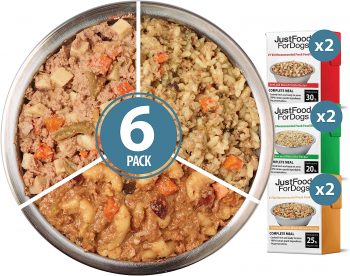
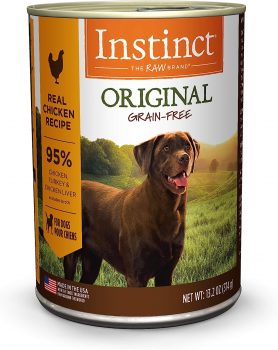
 Toledo, United States.
Toledo, United States.